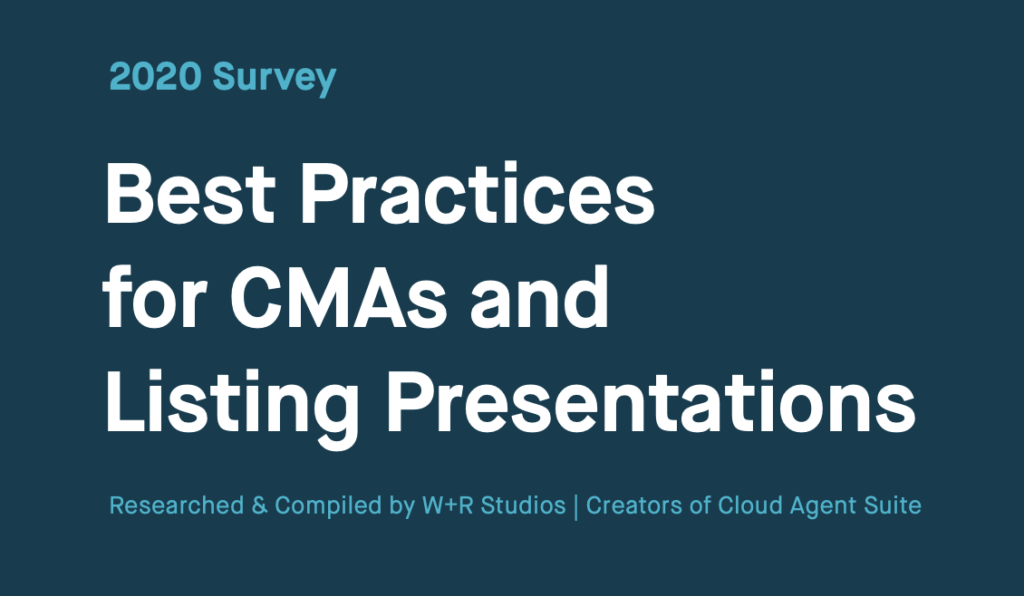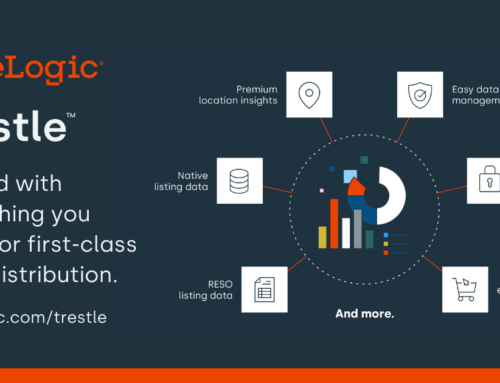The Comparative Market Analysis (CMA) is the script of the listing presentation. The narrative is developed using listing data. This week, W + R Studios, developers of the Cloud Agent Suite released research about real estate agent attitudes about the best practices for CMA. The report validates what most believe to be true about the role of the CMA in real estate. We have come a long way from MLS print outs, but it is still all about the data.
Each listing presentation takes between one and two hours to complete and MLS records followed by tax records are the most important data sources.
About 70% of agents indicate that they perform 0-12 listing presentations a year, which is surprisingly low. It is difficult to become an expert at software that is used fewer than 1 time per month, placing a premium on CMAs that are easy to use. This may also indicate that there is an opportunity for brokers to offer CMA coordinators much in the same way that they offer Transaction coordinators. I suspect that many agents would prefer to work with a CMA expert to prepare their listing presentation rather than struggle though it themselves.
Cloud CMA is among the few CMA providers that enable the agent to include Zillow’s Zestimate® as a data point in the CMA. The common belief is that every consumer is researching Zillow in the process of buying or selling a home, so why not do the work for the consumer? However, 65% of agents do not include or seldom include this data point. The survey results indicate that 84% of agents believe that the Zestimate is inaccurate. Clearly, the Zestimate is not a requirement for CMA software, more of a vitamin than a painkiller.
A powerful data component that is affirmed by the report is that agents interrogate all listing statuses in their CMA. Active listings are important to understand what is available to buyers today, but pricing is particularly influenced by pending, sold, expired, and withdrawn listings. The CMA may be one of the reasons why homes are selling so much faster (lower days on market) than ever before. It is hard for a listing to hide when the listing price is too high. Surprisingly, the report indicates that the properties included in a CMA range from 5 to 11. Agents focus on the Days on Market Comparison more than 61% of the time, making it one of the most vital calculations in the CMA report.
The report includes a section about other components in their CMA, like Resume, Seller Net Sheet, etc. Surprisingly, the survey did not include a question about the inclusion of a marketing plan for the property, or other services offered by the brokerage firm that benefit the seller. There is also an entire story about the demand side of pricing that is not discussed, i.e. services like Buyside that allow the agent to say “our company currently has XXX number of buyers looking for property in this price point with this configuration in this area.” It is hard to imagine why a seller would fail to be compelled by a presentation from an agent who already has buyers (many which are pre-approved) for the home. Saved search data is a key opportunity for the CMA which has yet to be fully advantaged.
The last question in the survey was regarding the future of the CMA. I fully expected to see questions about the impact of iBuyers. What we did learn is that 66% half of agents believe that CMAs will be more relevant in the future. View the entire survey results paper here.
Research like this is a great way to for technology companies to inform their strategic plan, product plan, marketing communications, and competitive positioning. WAV Group did not work with W + R Studios on this research, but our firm does offer this service to many technology developers in real estate. To discuss how WAV Group research can improve the effectiveness of your business, contact Marilyn Wilson by email at marilyn@wavgroup.com.





